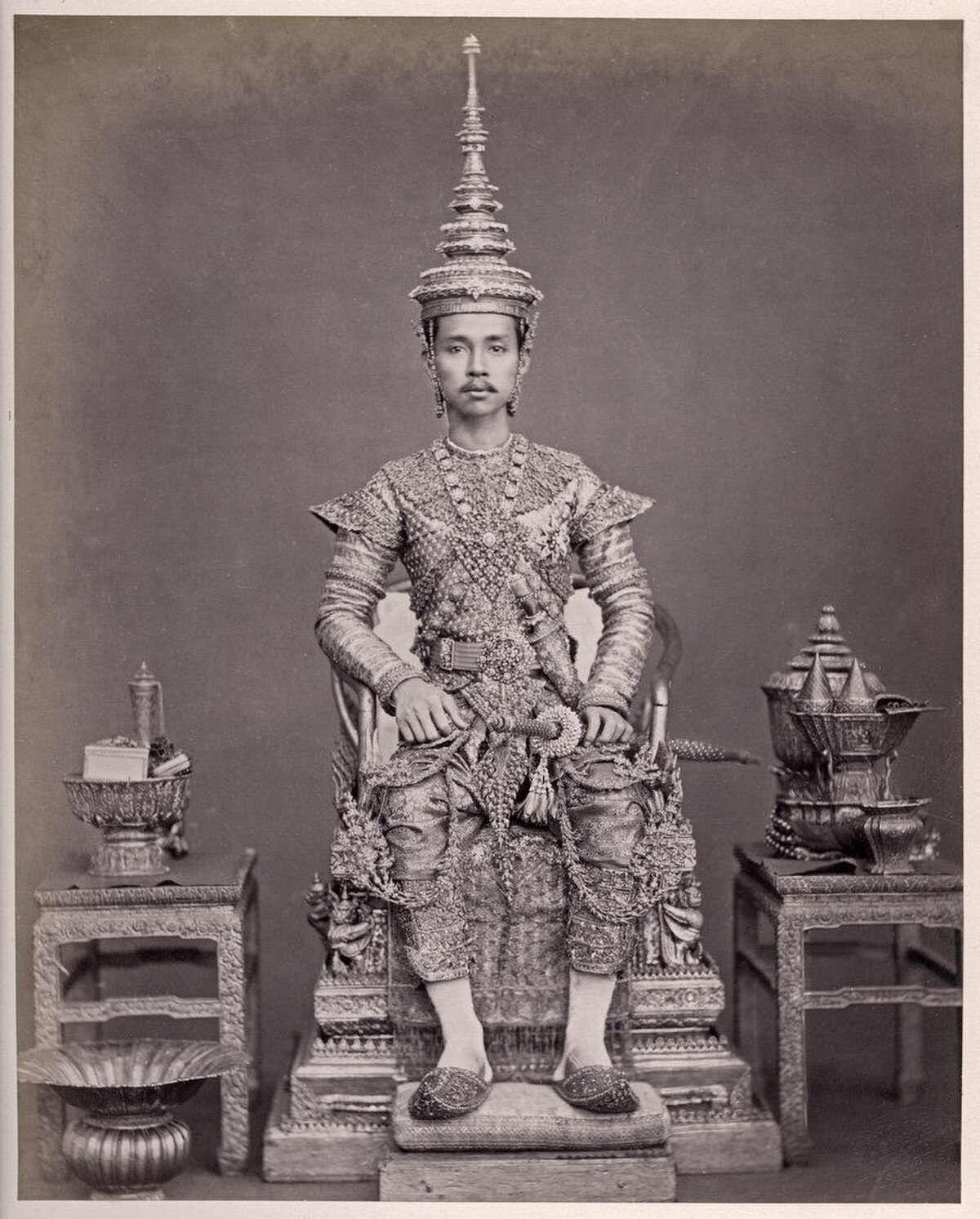
Modernization
ThailandWhen King Mongkut ascended the Siamese throne, he was severely threatened by the neighbouring states. The colonial powers of Britain and France had already advanced into territories which originally belonged to the Siamese sphere of influence. Mongkut and his successor Chulalongkorn (Rama V) recognised this situation and tried to strengthen the defence forces of Siam by modernisation, to absorb Western scientific and technical achievements, thus avoiding colonisation.
The two monarchs, who ruled in this epoch, were the first with Western formation. King Mongkut had lived 26 years as a wandering monk and later as an abbot of Wat Bowonniwet Vihara. He was not only skilled in the traditional culture and Buddhist sciences of Siam, but he had also dealt extensively with modern western science, drawing on the knowledge of European missionaries and his correspondence with Western leaders and the Pope. He was the first Siamese monarch to speak English.
As early as 1855, John Bowring, the British governor in Hong Kong, appeared on a warship at the mouth of the Chao Phraya River. Under the influence of Britain's achievements in neighbouring Burma, King Mongkut signed the so-called "Bowring Treaty", which abolished the royal foreign trade monopoly, abolished import duties, and granted Britain a most favourable clause. The Bowring Treaty meant the integration of Siam into the world economy, but at the same time, the royal house lost its most important sources of income. Similar treaties were concluded with all Western powers in the following years, such as in 1862 with Prussia and 1869 with Austria-Hungary. The survival diplomacy, which Siam had cultivated abroad for a long time, reached its climax in this epoch.[59]
The integration into the global economy meant to Siam that it became a sales market for Western industrial goods and an investment for Western capital. The export of agricultural and mineral raw materials began, including the three products rice, pewter and teakwood, which were used to produce 90% of the export turnover. King Mongkut actively promoted the expansion of agricultural land by tax incentives, while the construction of traffic routes (canals, roads and later also railways) and the influx of Chinese immigrants allowed the agricultural development of new regions. Subsistence farming in the Lower Menam Valley developed into farmers actually earning money with their produce.[60]
After the Franco-Siamese War of 1893, King Chulalongkorn realised the threat of the western colonial powers, and accelerated extensive reforms in the administration, military, economy and society of Siam, completing the development of the nation from a traditional feudalist structure based on personal domination and dependencies, whose peripheral areas were only indirectly bound to the central power (the King), to a centrally-governed national state with established borders and modern political institutions.
In 1904, 1907 and 1909, there were new border corrections in favour of France and Great Britain. When King Chulalongkorn died in 1910, Siam had achieved the borders of today's Thailand. In 1910 he was peacefully succeeded by his son Vajiravudh, who reigned as Rama VI. He had been educated at Royal Military Academy Sandhurst and University of Oxford and was an anglicised Edwardian gentleman. Indeed, one of Siam's problems was the widening gap between the Westernised royal family and upper aristocracy and the rest of the country. It took another 20 years for Western education to extend to the rest of the bureaucracy and the army.
